Scouting in Texas has a long history, from the 1910s to the present day, serving thousands of youth in programs that suit the environment in which they live. Scouting, also known as the Scout Movement, is a worldwide youth movement with the stated aim of supporting young people in their physical, mental and spiritual development, so that they may play constructive roles in society.
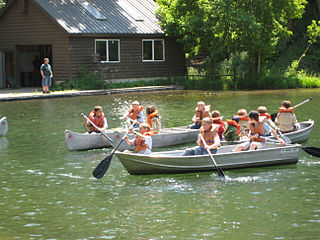
Scouting in Utah has a long history, from the 1910s to the present day, serving thousands of youth in programs that suit the environment in which they live.

Scouting in Arkansas has a long history, from 1913 to the present day, serving thousands of youth in programs that suit the environment in which they live.

Petit Jean State Park is a 3,471-acre (1,405 ha) park in Conway County, Arkansas managed by the Arkansas Department of Parks and Tourism. It is located atop Petit Jean Mountain adjacent to the Arkansas River in the area between the Ouachita Mountains and Ozark Plateaus.
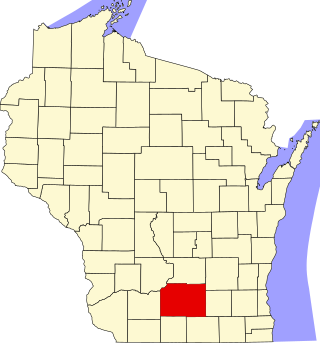
This is a list of the National Register of Historic Places listings in Dane County, Wisconsin. It aims to provide a comprehensive listing of buildings, sites, structures, districts, and objects in Dane County, Wisconsin listed on the National Register of Historic Places.

John Work House and Mill Site is a site listed on the National Register of Historic Places in Indiana just outside Charlestown, owned by the Lincoln Heritage Council, (BSA), as part of the Tunnel Mill Scout Reservation. For a century, it was an active gristmill until technology made it obsolete, and arson destroyed much of it. Prominent features around the site are Fourteen Mile Creek and the Devil's Backbone. The land is now used by the Boy Scouts of America for camping activities such as National Youth Leadership Training and a Webelos Camp. In 2010, part of the Tunnel Mill camp was leased to a private company for the purpose of restoring the Historic John Work House for use as a living history center. In order to prevent vandalism and amateur ghost hunters from further damaging the building, security guards patrol the property each night.

The Hadrosaurus foulkii Leidy Site is a historic archaeological site in Haddonfield, Camden County, New Jersey. Now set in state-owned parkland, it is where the first relatively complete set of dinosaur bones were discovered in 1838, and then fully excavated by William Parker Foulke in 1858. The dinosaur was later named Hadrosaurus foulkii by Joseph Leidy. The site, designated a National Historic Landmark in 1994, is now a small park known as "Hadrosaurus Park" and is accessed at the eastern end of Maple Avenue in northern Haddonfield.
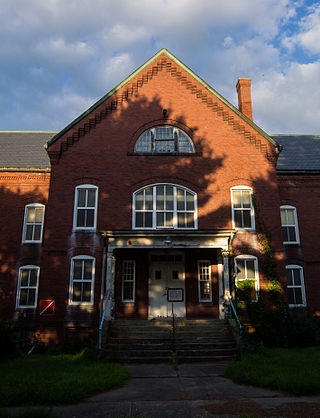
Medfield State Hospital, originally the Medfield Insane Asylum, is a historic former psychiatric hospital complex at 45 Hospital Road in Medfield, Massachusetts, United States. The asylum was established in 1892 as the state's first facility for dealing with chronic mental patients. The college-like campus was designed by William Pitt Wentworth and developed between 1896 and 1914. After an era dominated by asylums built using the Kirkbride Plan, Medfield Insane Asylum was the first asylum built using the new Cottage Plan layout, where instead of holding patients in cells, they would be integrated into a small community and work a specific job. It was formally renamed "Medfield State Hospital" in 1914.

The First Congregational Church is an historic church in Stoneham, Massachusetts. Built in 1840, it is a fine local example of Greek Revival architecture, and is a landmark in the town center. It was listed on the National Register of Historic Places on April 13, 1984. The church is affiliated with the United Church of Christ; the current pastor is the Rev. Ken McGarry.

The Chickasaw Council is a local council of the Boy Scouts of America that serves Scouts in Shelby County, Tennessee, as well as Crittenden county in eastern Arkansas and fifteen counties in northwest Mississippi. It was founded on February 22, 1916, to oversee the many Boy Scout troops already present in Memphis, Tennessee. The Chickasaw Council has two camps: Kia Kima Scout Reservation and Camp Currier. The Chickasaw Council is also home to the Order of the Arrow Ahoalan-Nachpikin Lodge 558.

The Fossil Cabin near Medicine Bow, Wyoming, United States, was built in 1932 as a roadside attraction. The cabin is built of dinosaur bones excavated at nearby Como Bluff, using a total of 5,796 bones. The cabin was built as part of a gasoline filling station along US 30 by Thomas Boylan. Boylan had come from California to homestead in Wyoming and had been collecting bones for seventeen years, intending to create sculptures of dinosaurs in front of his house and gas station along the Lincoln Highway.

Buchanan County Court House in Independence, Iowa, United States was built in 1940. It was listed on the National Register of Historic Places in 2003 as a part of the PWA-Era County Courthouses of IA Multiple Properties Submission. The current structure is the third courthouse to house court functions and county administration.
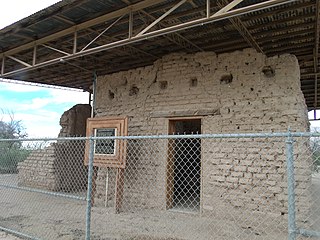
Fort Lowell was a United States Army post active from 1873 to 1891 on the outskirts of Tucson, Arizona. Fort Lowell was the successor to Camp Lowell, an earlier Army installation. The Army chose a location just south of the confluence of the Tanque Verde and Pantano creeks, at the point where they form the Rillito River, due to the year-round supply of water during that period. The Hohokam natives had chosen the site centuries earlier, presumably for the same reason. To this day, shards of Hohokam pottery can still be found in the area. The Army claimed a military reservation that encompassed approximately eighty square miles and extended east toward the Rincon Mountains.

The First Congregational Church of East Hartford and Parsonage is a historic church at 829-837 Main Street in East Hartford, Connecticut. The congregation was founded around 1699 and the current church building was constructed around 1833. The building was added to the National Register of Historic Places in 1982. The congregation is currently affiliated with the United Church of Christ.

Episcopal Church of the Advent is a historic Episcopal church at 141 Advent Street in Spartanburg, South Carolina.

The Lower Swedish Cabin is a historic Swedish-style log cabin which is located on Creek Road in the Drexel Hill section of Upper Darby, Pennsylvania, along Darby Creek. The cabin may be one of the oldest log cabins in the United States and is one of the last cabins built by the Swedish settlers that remains intact.

The Red Cross Canteen in El Reno, Oklahoma is a small wooden structure located east of the Rock Island Depot. Built by volunteer labor with telegraph poles donated by the Rock Island Railroad, the facility opened on August 1, 1918, just south of the railroad station as an American Red Cross commissary to serve troop trains that stopped in El Reno during World War I.

Fort Apache Historic Park is a tribal historic park of the White Mountain Apache, located at the former site of Fort Apache on the Fort Apache Indian Reservation. The park interprets the rich and troubled history of relations between the Apache and other Native American tribes at the fort, which was converted into a Bureau of Indian Affairs boarding school after its military use ended. The park, which covers 288 acres (117 ha) of the former fort and school, as well as a nearby military cemetery, form the National Historic Landmark Fort Apache and Theodore Roosevelt School historic district.

Le Mars Municipal Park and Golf Course Historic District is a nationally recognized historic district located in Le Mars, Iowa, United States. It was listed on the National Register of Historic Places in 2001. At the time of its nomination the district consisted of 25 resources, including 11 contributing buildings, one contributing site, four contributing structures, eight non-contributing buildings, and one non-contributing structure.
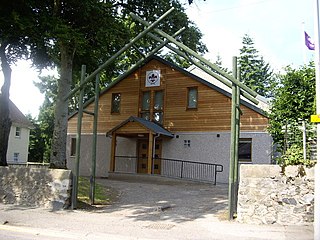
A Scout hall is a building owned or rented and used as a meeting place by a Scout Group.




















